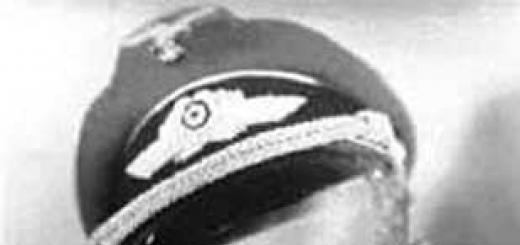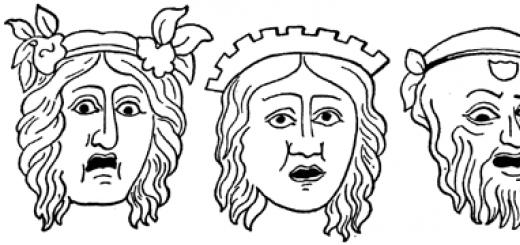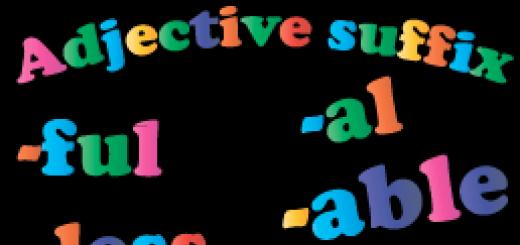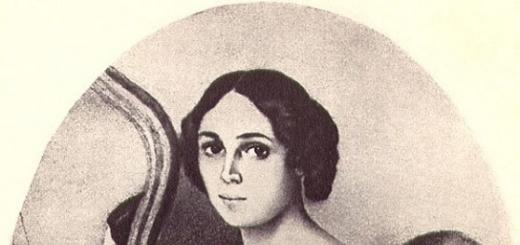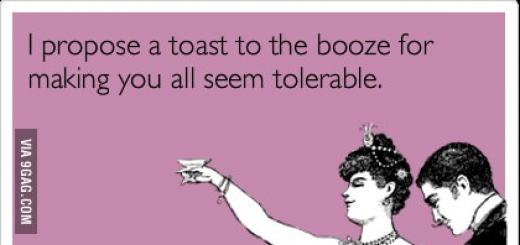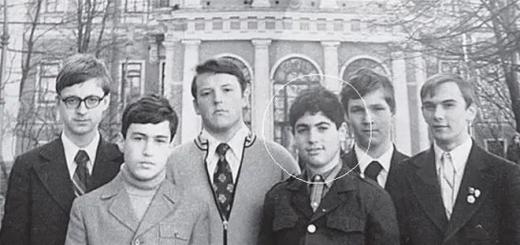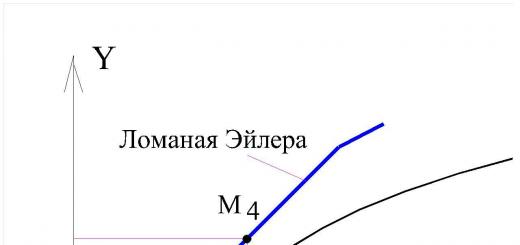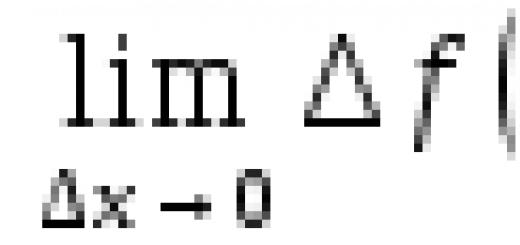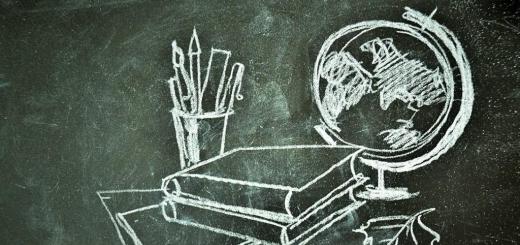When choosing a school for a child, parents take into account many factors: location, traditions, educational focus of the school, reviews. Now this list has been supplemented with another important item: the training program.
Currently offering a variety of work programs for each level of the school from grades 1-11 . As a rule, general education institutions choose several educational programs, especially in the primary grades, and parallel classes are taught in different teaching materials.
Today it is important for parents to know: how to choose a suitable educational program and how do they differ? This question arises especially urgently in elementary school, because it determines how successfully the child will study.
Let's make a reservation right away: it is incorrect to divide programs into “bad and good”. All elementary school programs according to the Federal State Educational Standard are approved by the Ministry of Education of the Russian Federation. They are simply designed for different ways of perception and take into account the peculiarities of the child’s thinking. One thing in common: all programs allow the student to master the necessary minimum knowledge for primary school. The difference is in the presentation of the material, in the organization of educational activities, in the variety of exercises.
Educational programs for primary school
1. Program "School of Russia"(edited by A. Pleshakov) is one of the oldest and time-tested programs. Since Soviet times, the program has been improved more than once and adapted to the realities of modern times.
Designed for all children and allows them to thoroughly develop writing, reading and counting skills.
2. Program "Primary school of the XXI century"(edited by N. F. Vinogradova). The material is complex, designed for erudite children. The program teaches independence, a lot of work is being done to cultivate interest in the educational process, the ability to properly organize studies. There are many additional materials and exercises aimed at developing memory , logic, outlook, imagination.Each student can learn at his chosen pace, since there are tasks of different levels of complexity and different directions.
The main goal of the program: to teach the child to learn.
3. Program "Primary Promising School". Features: there is no need to cram rules, theorems and axioms. The emphasis is on the development of logic, intelligence and analytical thinking. Additional hours are provided for drawing, music, and physical education.
Suitable for any child, regardless of his level of readiness for school.
4. Program "School 2100"(edited by A. A. Leontyev). This program is gaining more and more fans. An undoubted advantage of the program: continuity of education, since you can study it from the age of 3 until graduation.
Feature of the program: educational material is given to the maximum, varied, at different levels. The student himself chooses how much knowledge will be sufficient. An individual approach to each child is used.
Suitable for all children.
5. "Harmony"(edited by N. B. Istomin). The program involves close cooperation with parents. Many topics are suggested to be discussed at home first. Much attention is paid to the development of self-education skills.
Priority is given to students' independent work. The techniques of observation, selection, transformation and design are actively involved. All material is presented in a diverse manner, taking into account the students’ own experience and practical orientation of knowledge.
Suitable for children with analytical thinking and a penchant for technical sciences.
6. "Planet of Knowledge"- focused on the development of creative abilities. During the course, schoolchildren compose their own fairy tales, stage plays, complete projects, and make presentations.
Provides the necessary minimum knowledge, skills and abilities. Everything beyond the program is at the request of the students.
Suitable for children with a humanitarian bias.
7. Primary school program "Perspective". Here, much attention is paid to the issues of raising children as citizens of their country and the formation of moral positions.
Many tasks are aimed at developing logic and imagination. A huge amount of additional material is used, with several manuals for each subject. The teaching principle is dialectical. The presentation of the material is accessible, although sometimes boring.
Suitable for all children, regardless of their readiness for school.
8. Program by L. V. Zankov. There is a huge amount of material included in the system. All lessons are equivalent; great attention is paid to the development of logic, analytical thinking, and independent work skills. There are electives in computer science, economics, and foreign languages. Training is carried out at a fast pace.
Suitable for children well prepared for school.
9. Elkonin-Davydov program. A rather controversial program, but very interesting for children. Much attention is paid to theoretical thinking, the construction of tasks, problematic issues and the search for their resolution. Learning is slow. The only disadvantage we can note is the discrepancy in some of the terms studied. So, for example, the authors of textbooks call verbs action words, and nouns - object words. This creates certain difficulties in high school... We hope it helps you in your work!
All public schools in our country teach children according to educational and methodological programs that must comply with Federal State Educational Standards - Federal State Educational Standards. However, their very content, as well as teaching methods, may differ significantly. “Littlevan” tried to figure out how certain curricula for primary grades are formed, which of them are officially approved for use, and how they differ from each other.
Curricula: general provisions
Many parents of future first-graders are concerned about the question of what program their children will study in, and whether they can somehow influence its choice. According to current legislation and educational standards, each school has the right to create its own. However, it can only be based on educational literature approved by order of the Ministry of Education and Science of the Russian Federation dated March 31, 2014 No. 253 (with subsequent amendments, the latest dated April 21, 2016) “On approval of the federal list of textbooks recommended for use in the implementation of existing state accreditation of educational programs of primary general, basic general, secondary general education.” The so-called “federal list” is not a disparate set of textbooks, but several completed subject lines, which, in turn, are an integral part of certain programs - educational and methodological complexes (UMK). Each of them has its own principles and characteristics. The educational complex is created by one team of authors with a specific scientific supervisor.
Thus, a parent can choose a specific curriculum only indirectly - by finding out in advance which school teaches using the textbooks of the educational institution they like, and, if possible, by enrolling their child there (we wrote about the rules for admission to 1st grade here and here). Some schools, in which parallel classes teach different teaching materials, test children to determine the program that is more suitable for them.
What teaching methods are allowed today?
Today, the federal list includes textbooks that are included in the following educational and methodological complexes:
- "Russian School"
- "RHYTHM",
- "Perspective"
- "Primary school of the XXI century",
- "Promising Primary School"
- "Planet of Knowledge"
- System of D. B. Elkonin - V. V. Davydov,
- "Elementary innovative school."
The list must be updated once every three years or more often. Thus, since 2014, including on the basis of negative expert opinions, the textbooks previously distributed in many educational educational institutions were removed from it: “School 2000”, “School 2100”, “Dialogue”, “Harmony”. And in the developmental education system of L.V. Zankov, only manuals on fine arts are now recommended!
However, it is worth keeping in mind that all books and notebooks that are no longer included in the federal list can be used for training for another 5 years after the relevant acts enter into force. In addition, over time, some completed subject lines of textbooks within the framework of one educational textbook may be excluded and replaced in the list of recommended ones with new ones (a corresponding order is issued by the Ministry of Education and Science of the Russian Federation).
One more nuance. Elementary school teachers themselves have the legal right to choose which textbooks to base the educational process on (and follow this choice for all 4 years of study). However, they do not necessarily relate to one specific educational system. The main thing, we repeat, is that all textbooks are listed on the federal list.
Peculiarities
This project of the Prosveshchenie publishing house is currently perhaps the most widespread textbook system in Russian schools. The teaching and learning center has existed since 2001 and has been updated and supplemented more than once since then. Its peculiarity is its focus on the formation of universal educational actions in the child. As advantages of the “Russian School”, parents on Littleone.ru note the simplicity, consistency and “clarity” of the presentation of the material (the presence of rules, algorithms for solving problems), as well as the fact that it is most similar to how they were taught in “Soviet childhood” . At the same time, the simplicity of the program, when compared with other educational systems, is also considered one of its disadvantages. Some also note with a minus sign that during training little imagination and own logical thinking are involved. About authors and textbooks.
Reviews from forum members about the educational complex. , , , , , , , , , .
“RHYTHM” stands for “Development. Individuality. Creation. Thinking”, which very clearly defines the peculiarity of this educational complex. The program integrates all primary school subjects and is based on the principles of revealing the individuality of each student, instilling in him the ability to think creatively and independently. Its basis is a revised, supplemented and brought into conformity with the Federal State Educational Standard of Educational Instructions “Classical Primary School” (previously very common, now its textbooks are excluded from the list of recommended ones). This teaching aid is quite rare in elementary schools now; there are few reviews on it. The textbooks are published by the Drofa publishing house. About authors and textbooks.
Reviews from forum members about the educational complex. , , , , .
Another set of textbooks published by Prosveshchenie. Since 2010, the scientific director of this teaching and learning center has been Lyudmila Georgievna Peterson, laureate of the Russian Presidential Prize in the field of education. In contrast to “Schools 2000”, which was excluded from the federal list, this educational complex, with some similar principles, evokes greater sympathy from parents. It is based on the idea that the teacher only pushes towards knowledge; the child must “discover” it himself. At the same time, some say that the program is difficult for average children and is largely designed for intuitive understanding and independent extracurricular work. Other parents, on the contrary, consider its complexity and focus on cognitive activity to be among the advantages of educational training, and recommend it for children with a mathematical mind. About authors and textbooks.
Reviews from forum members about the educational complex. , , , , , , .
According to the methodology of this educational complex, each child acts as a researcher and is an equal subject of the learning process (and not “listened-remembered-repeat”). The program includes many tasks for imagination and ingenuity. The textbook system is published by the VENTANA-GRAF publishing center. It is part of the educational system “Algorithm of Success”. Parents of children enrolled in the program note its confusion and inconsistent presentation of material as disadvantages. Others consider the long period of adaptation of the child to school, the difference from the “Soviet school”, the strong philological component as advantages and call the educational complex “quite adequate and interesting.” Most people agree that it will be easier for those children who entered 1st grade to learn how to read, but who do not know how to write. About authors and textbooks.
Reviews from forum members about the educational complex. ,
Determining a list of textbooks and teaching aids for use in the educational process of basic general education is one of the criteria for the readiness of an educational institution for the introduction of the Federal State Educational Standard LLC. Therefore, it is advisable to outline the principles for choosing educational and methodological kits (TMK).
Educational and methodological kits- these are open systems of teaching aids that provide a student-oriented level of learning in a secondary school environment. Educational and methodological kits contain various structural elements: textbooks, notebooks for students, notebooks for assessing the quality of knowledge, anthologies, teaching aids, work programs, kits test tasks, computer programs, electronic applications, etc.
According to Article 18 of the Federal Law of the Russian Federation "On Education in the Russian Federation" clause 4. Organizations carrying out educational activities in educational programs of primary general, basic general, secondary general education that have state accreditation, choose for use in the implementation of these educational programs:
2) teaching aids issued by organizations included in the list of organizations that produce teaching aids that are allowed for use in the implementation of educational programs of primary general, basic general, secondary general education that have state accreditation.
Thus, teachers have the right to choose teaching materials in accordance with the educational program approved by the educational institution. In one educational institution, in different classes, training can be carried out using parallel teaching materials.
The principles for selecting teaching materials may be as follows:
1. Complies with the Federal State Educational Standard of the NOO .
2. Reflects the specifics of the regional education system.
3. Ensures the realization of the interests and needs of students, their parents, educational institutions, and the founder of the educational institution.
Key ideas embedded in the subject content, didactic support and methodological support of teaching materials, corresponding to the Federal State Educational Standards of NOO and the Federal State Educational Standards of LLC:
Citizen education - ensures the implementation of the ideological basis of the Federal State Educational Standard - the Concept of spiritual and moral development and education of the personality of a Russian citizen, which formulates the modern national educational ideal. This is a highly moral, creative, competent citizen of Russia, who accepts the fate of the Fatherland as his own, aware of responsibility for the present and future of his country, strengthened in the spiritual and cultural traditions of the multinational people of the Russian Federation.
Formation of value guidelines - provides for the selection of educational content and types of activities of students, aimed at forming a system of personal values in the process of learning and upbringing. The basis of the formed value system is the basic national values presented in the Concept of spiritual and moral development and education of the personality of a Russian citizen. These values are specified in accordance with the characteristics of the content, developmental and educational potential of each academic subject.
Learning by doing - assumes that the achievement of the targets and fundamental principles specified in the Federal State Educational Standards LLC, the exemplary programs for subjects and the goals and fundamental principles implemented in the educational complex is ensured by the formation of universal learning activities (ULA) through the implementation of a system-activity approach. UUD act as the basis of the educational process. The content and methodological support of teaching materials provide for the formation of all types of universal educational actions: personal, regulatory, cognitive, communicative.
Synthesis of traditions and innovations - means relying on the best, time-tested traditions of the national school in combination with innovative approaches proven by the practice of the educational process, ensuring the development of education at the present stage of the country’s life. In educational complexes corresponding to the Federal State Educational Standards of NOO and Federal State Educational Standards of LLC, innovations such as the formation of universal educational activities, the organization of project activities, work with various types of information, the creation of student portfolios, new forms of assessing student achievements, etc. are consistently used.
Results-oriented - in the modern understanding, it means purposeful and consistent activity to achieve personal, meta-subject and subject-specific results in mastering the basic educational program of basic general education. For this purpose, the structure and content of the educational complex includes a system of tasks aimed at including students in the activity-based mastery of educational material in order to master the educational material and develop the ability to independently assimilate new knowledge, skills and competencies, including the leading educational competence - the ability to learn.
Variability - the educational complex provides the possibility of use in working with different categories of students.
Working on the Educational System “School 2100” I can note that The computer science textbooks of the School 2100 educational system are not similar to those that I worked on before. Using the recommended techniques and technologies allows me to maximize the educational potential of these textbooks. They are based on the following educational technologies:
Technology of problematic dialogue. It assumes that a child, under the guidance of a teacher, discovers new knowledge: learns to think independently, systematize, analyze and select missing facts.
Technology for forming the right type of reading activity. It teaches productive reading: the ability to read all types of textual information (factual, conceptual, subtextual), independently master the text before reading, during reading and after reading. The main methods of text analysis in this technology are dialogue with the author and commented reading.
Technology for assessing student educational achievements. It is directly related to the comfort of learning. Our children learn to independently evaluate the results of their educational activities, we differentiate assessment and marking, and offer tasks at three levels: necessary, program and maximum.
The propaedeutic course “Informatics in games and tasks” (1-6) can be divided into several blocks: introductory block (grades 1-2), main block (grades 3-4), transition block (grades 5-6). Thus, the course “Informatics in games and tasks” for the 5th grade opens the final stage of the course “Informatics in games and tasks”. Using textbooks - notebooks for grades 5-6, you can either continue studying the propaedeutic course, or start and completely complete a shortened version of the course.
The main purpose of the propaedeutic course “Informatics in games and tasks” is to prepare students for the perception of the basic course of computer science, especially its most logically complex sections, such as algorithms and executors, elements of formal logic, formalization and modeling. Therefore, in the propaedeutic course “Informatics in Games and Problems,” priority is given to such basic course topics as formalization and modeling, algorithms, quantities, and elements of propositional logic. Thus, the goal of the course is to give students invariant fundamental knowledge in areas related to computer science, which, due to continuous updating and changes in hardware and software, come to the fore in the formation of the scientific information and technological potential of society.
The educational material is aimed at introducing students to information modeling of processes, objects and logical reasoning, and at developing initial skills in creating formalized descriptions:
Processes;
Nonlinear sections of processes;
Connections between descriptions of several processes;
Object states;
Object classes;
Behaviors of class objects;
Structures of objects and systems;
Relationships between classes and subclasses of objects;
Connections between different states of an object;
Simple and complex statements;
Connections between condition statements and conclusion statements.
Firstly, the goals of developing students’ thinking are achieved to a greater extent precisely when mastering methods of describing objects and logical reasoning.
Secondly, such promising areas as “Object-oriented programming (OOP)” and “Expert systems (ES)” have appeared in theoretical and practical computer science.
Since in “School 2100”, for each academic subject, development lines are formulated - personality qualities developed through the means of this academic subject. The new computer science textbook is aimed at developing skills for life in the information society (Homo Informaticus - a man of the information society).
Computer science textbooks for grades 7-9 are divided into modules. Each module is associated with a list of skills to be mastered. The teacher himself selects the required one for the available number of hours. kit modules, receives a working program. Module sizes are quantized. Quantum of 8-9 lessons (to ensure interchangeability of modules). The material is given in abundance: the total volume of all module lessons in the textbook for one class allows for up to 3 lessons per week. The modules are divided into 2 parts of 8-9 lessons: minimum and addition to the norm.
Determine the problem of the lesson. This leads to the topic (question, goal) of the lesson: discussing the problem in the proposed material and formulating the main question of the lesson (with the whole class, in a group or in pairs). Compare your version of the question with the author's. Author's questions to the paragraphs are located in the “Contents” under the paragraph titles and are in italics.
Let's remember what we know. This is how questions and tasks are indicated on the studied material, which is necessary for the discovery of new knowledge.
We solve a problem, discover new knowledge. In a group, in pairs or together with a teacher, conducting a dialogue, a solution to the problem is sought.
We apply new knowledge. This is how tasks for applying new knowledge are designated.
Thus, computer science textbooks of the educational system "School 2100" for grades 7-9 implement the requirements of the standard and the approach to multi-level education.
Literature:
- Methodological recommendations for teachers for the textbook “Informatics in games and tasks” / A.V. Goryachev, N.I. Suvorova, T.Yu. Spiridonova-M: Balass, 2013
- Computer science. 7th grade: educational. For general education Institutions: 2 kN./A.V. Goryachev, L.A. Makarina, A.V. Pavolotsky, N.S. Platonov. -M: Balass, 2014 (Educational school 21000).
- Materials of the webinar on the topic “Content and features of teaching a continuous course in computer science in primary and secondary schools in the context of the implementation of the Federal State Educational Standard on the example of OS textbooks “School 2100”.
About educational complex "School of Russia"
One of the most famous projects of the Prosveshchenie publishing house in the country is the educational and methodological complex (UMK) for primary grades “School of Russia”. The educational complex “School of Russia” is built on the same principles for all academic subjects ,
has full software and methodological support and guarantees .
, which form the basis of the educational complex “School of Russia”, are aimed at providing modern education for primary schoolchildren in the context of the requirements of the Federal State Educational Standard.
A powerful educational resource is the educational complex “School of Russia”, which includes: , , , components of the IOS core, as well as a powerful methodological shell, a variety of electronic and Internet resources.
The proposed material in the article reveals answers to pressing questions about the differences between the new textbooks of the “School of Russia” educational system that were revised and passed the federal examination in 2010 for compliance with the Federal State Educational Standard. Features of the completed subject lines of the new textbooks, combined into a single educational system, are presented in the explanatory note to the textbook system “Russian School”, prepared as part of its examination for compliance with the Federal State Educational Standard.
The School of Russia textbook system, based on expert opinions of the Russian Academy of Sciences and the Russian Academy of Education, implements the Federal State Educational Standard for Primary General Education, covers all subject areas of the Federal State Educational Standards curriculum and includes the following completed subject lines:
- »:
2. Kanakina V.P., Goretsky V.G. Russian language. 1 class
3. Kanakina V.P., Goretsky V.G. Russian language. 2 classes in 2 parts
4. Kanakina V.P., Goretsky V.G. Russian language. 3 grades in 2 parts
5. Kanakina V.P., Goretsky V.G. Russian language. 4 grades in 2 parts
- Completed subject line of textbooks " »:
1. Goretsky V.G., Kiryushkin V.A., Vinogradskaya L.A. and etc. . 1 class at 2 o'clock
2. Zelenina L.M., Khokhlova T.E. Russian language. 1 class
3. Zelenina L.M., Khokhlova T.E. Russian language. 2 classes in 2 parts
4. Zelenina L.M., Khokhlova T.E. Russian language. 3 grades in 2 parts
5. Zelenina L.M., Khokhlova T.E. Russian language. 4 grades in 2 parts
Explanatory note to the completed subject line of textbooks on the Russian language (authors Zelenina L.M., Khokhlova T.E.) for grades 1-4 of general education institutions
-
1. Klimanova L.F., Goretsky V.G., Golovanova M.V. and others. Literary reading. 1 class in 2 parts
2. Klimanova L.F., Goretsky V.G., Golovanova M.V. and others. Literary reading. 2 classes in 2 parts
3. Klimanova L.F., Goretsky V.G., Golovanova M.V. and others. Literary reading. 3 grades in 2 parts
4. Klimanova L.F., Goretsky V.G., Golovanova M.V. and others. Literary reading. 4 grades in 2 parts
- Completed subject line of textbooks "":
1. Moro M.I., Stepanova S.V., Volkova S.I. Mathematics. 1 class in 2 parts
2. Moro M.I., Bantova M.A., Beltyukova G.V. and others. Mathematics. 2 classes in 2 parts
3. Moro M.I., Bantova M.A., Beltyukova G.V. and others. Mathematics. 3 grades in 2 parts
4. Moro M.I., Bantova M.A., Beltyukova G.V. and others. Mathematics. 4 grades in 2 parts
- Completed subject line of textbooks “Informatics”:
1. Semenov A.L., Rudchenko T.A. Computer science. 3 grades Part 1
2. Semenov A.L., Rudchenko T.A. Computer science. 3-4 grades Part 2
3. Semenov A.L., Rudchenko T.A. Computer science. 4 grades Part 3.
- Completed subject line of textbooks "":
1. Pleshakov A.A. The world. 1 class in 2 parts
2. Pleshakov A.A. The world. 2 classes in 2 parts
3. Pleshakov A.A. The world. 3 grades in 2 parts
4. Pleshakov A.A., Kryuchkova E.A. The world. 4 grades in 2 parts
- Completed subject line of textbooks “Technology”:
1. E.A. Lutseva, T. P. Zueva Technology. 1 class
2. E.A. Lutseva, T. P. Zueva Technology. 2 classes
3. E.A. Lutseva, T. P. Zueva Technology. 3 grades
4. E.A. Lutseva, T. P. Zueva Technology. 4 grades
- Completed subject line of textbooks "":
1. Rogovtseva N.I., Bogdanova N.V., Freytag I.P. Technology. 1 class
2. Rogovtseva N.I., Bogdanova N.V., Dobromyslova N.V. Technology. 2 classes
3. Rogovtseva N.I., Bogdanova N.V., Dobromyslova N.V. Technology. 3 grades
4. Rogovtseva N.I., Bogdanova N.V., Shipilova N.V. etc. Technology. 4 grades
- Completed subject line of textbooks “Music”:
1. Kritskaya E.D., Sergeeva G.P., Shmagina T.S. Music. 1 class
2. Kritskaya E.D., Sergeeva G.P., Shmagina T.S. Music. 2 classes
3. Kritskaya E.D., Sergeeva G.P., Shmagina T.S. Music. 3 grades
4. Kritskaya E.D., Sergeeva G.P., Shmagina T.S. Music. 4 grades
- Completed subject line of textbooks "":
1. Nemenskaya L.A. (edited by Nemensky B.M.). Art. 1 class
2. Koroteeva E.I. (edited by Nemensky B.M.). Art. 2 classes
3. Goryaeva N.A. (edited by Nemensky B.M.). Art. 3 grades
4. Nemenskaya L.A. (edited by Nemensky B.M.). Art. 4 grades
- Completed subject line of textbooks “Physical Education”:
Lyakh V.I. Physical Culture. 1-4 grades
- Completed subject line of textbooks "":
Viner I.A., Gorbulina N.M., Tsygankova O.D. Physical culture. 1-4 grades
- Completed subject line of textbooks “English”:
1. Kuzovlev V.P., Peregudova E.Sh., Pastukhova S.A. and others. English language. 2 classes in 2 parts
2. Kuzovlev V.P., Lapa N.M., Kostina I.P. and others. English language. 3 grades in 2 parts
3. Kuzovlev V.P., Peregudova E.Sh., Duvanova O.V. English language. 4 grades in 2 parts
- Completed subject line of textbooks “English language” (extended content of foreign language teaching):
1. Vereshchagina I.N., Bondarenko K.A., Pritykina T.A. English language. 2 classes in 2 parts
2. Vereshchagina I.N., Pritykina T.A. English language. 3 grades in 2 parts
3. Vereshchagina I.N., Afanasyeva O.V. English language. 4 grades in 2 parts
- Completed subject line of textbooks “German”:
1. Bim I.L., Ryzhova L.I. German. 2 classes in 2 parts
2. Bim I.L., Ryzhova L.I., Fomicheva L.M. German language. 3rd grade. in 2 parts
3. Bim I.L., Ryzhova L.I. German. 4 grades in 2 parts
- Completed subject line of textbooks “French”:
1. Kuligina A.S., Kiryanova M.G. French language. 2 classes
2. Kuligina A.S., Kiryanova M.G. French language. 3 grades in 2 parts
3. Kuligina A.S. French language. 4 grades in 2 parts
- Completed subject line of textbooks “Spanish Language”:
1. Voinova A.A., Bukharova Yu.A., Moreno K.V. Spanish language. 2 classes in 2 parts
2. Voinova A.A., Bukharova Yu.A., Moreno K.V. Spanish language. 3 grades in 2 parts
3. Voinova A.A., Bukharova Yu.A., Moreno K.V. Spanish language. 4 grades in 2 parts
- Completed subject line of textbooks “Fundamentals of the spiritual and moral culture of the peoples of Russia”:
1. Kuraev A.V. Fundamentals of the spiritual and moral culture of the peoples of Russia. Fundamentals of Orthodox culture. 4-5 grades
2. Latyshina D.I., Murtazin M.F. Fundamentals of the spiritual and moral culture of the peoples of Russia. Fundamentals of Islamic culture. 4-5 grades
3. Chimitdorzhiev V.L. Fundamentals of the spiritual and moral culture of the peoples of Russia. Fundamentals of Buddhist culture. 4-5 grades
4. Chlenov M.A., Mindrina G.A., Glotser A.V. Fundamentals of the spiritual and moral culture of the peoples of Russia.
Fundamentals of Jewish culture. 4-5 grades
5. Beglov A.L., Saplina E.V., Tokareva E.S. and others. Fundamentals of the spiritual and moral culture of the peoples of Russia. Foundations of world religious cultures. 4-5 grades
6. Fundamentals of the spiritual and moral culture of the peoples of Russia. Fundamentals of secular ethics. 4-5 grades
The educational and methodological complex is literature, visual aids, and other means in a particular discipline. What might it include? The educational and methodological complex of the program includes: reading books, anthologies, manuals, collections of problems, articles, monographs. In addition, this also includes lesson aids that allow the teacher to develop the individual characteristics of schoolchildren.
Varieties
The educational and methodological complex in history involves both thematic and lesson-based developments. For example, depending on the level of knowledge and skills of students, certain tasks and exercises are selected for each student. For highly motivated schoolchildren, the teacher prepares assignments in the form of essays, during which the children have the opportunity to demonstrate to the teacher their personal position in relation to the historical period or era in question.

The teacher uses course manuals to reduce the time spent preparing for classes, which is important when the weekly workload is high. Such collections are in demand among beginning teachers.
School textbook
It is difficult to imagine the educational and methodological complex of a school course discipline without a book. Currently, a school textbook is compiled taking into account the age characteristics of children and the level of depth in a certain scientific field.
Let us highlight the main functions that this manual performs:
- reveals the main content of education, contains the volume of material for a separate lesson, taking into account age characteristics;
- guarantees consistency in the presentation of the material and involves its systematization;
- simplifies the process of assimilation and consolidation of knowledge;
- allows you to realize the educational goals of teaching a specific academic discipline.
The electronic educational and methodological complex has become an excellent alternative to traditional paper materials. It can be used not only by the teacher, but also by the student.

Textbook structure
The textbook presents a text determined by a system for selecting specific facts. For example, in the 8th grade school chemistry course, the author includes in the book material related to inorganic substances, their properties, and transformations. The content is divided into chapters, sections, and individual paragraphs. Logic and consistency must be observed between them, a smooth transition from simple facts to complex material.
The textbook is divided into theoretical (basic) material, background information, comments and notes.
The text is based on information about the most important concepts and ideas, theories, and types of activities.
The complexity of the text of a book can be linguistic, logical, and also subject-specific. For example, historical content is associated with numerous terms, concepts, and theoretical conclusions.
The extra-textual components of the textbook include illustrations, assignments and questions, various documents, as well as certain indexes. For example, in a history course, images of the past are presented using diagrams: battles, battles, fortresses.
The main part of the methodological apparatus of the school textbook are assignments and questions for the proposed paragraphs.
With their help, students consciously and deeply assimilate the content of the academic discipline, and the teacher gets the opportunity to reveal the content of the book by means of symbolic and figurative clarity.
When assessing the quality of textbooks, experts use certain criteria:
- its compliance with modern requirements of the education system;
- reflection in it of the values of society;
- scientific approaches to indicating facts;
- presenting certain facts from different points of view;
- compliance of the content with the requirements of the program for this academic discipline;
- quality of the scientific base;
- correlation of content and style of presentation with the age characteristics of students;
- the methodological value of the book, its compatibility with other manuals.
Since the educational and methodological complex is the basis for the modernization of Russian education, close attention is paid to its integrity and consistency.
For example, in pedagogical practice, a list of Federal textbooks has appeared, which includes only those materials that fully meet the requirements of the second generation Federal State Educational Standard.

Distinctive parameters of new generation textbooks
For example, for a history book, as part of the new requirements, you can note:
- use of cultural and civilizational approach;
- use of a figurative system;
- information richness;
- expressiveness and brightness of presentation of the main material;
- giving additional texts the status of a full-fledged information source;
- value accents of the text;
- formation of new types of tasks and questions.
Specifics of new generation textbooks
The foundations of the educational and methodological complex are laid in the form of a logical connection of concepts, internal continuity between textbooks of the same subject and methodological line. This contributes to a better understanding and awareness of the content of the book. For example, in chemistry from grades 8 to 11, the O. S. Gabrielyan set is used. In addition to textbooks, his educational and methodological complex is a set of collections of tasks and exercises, manuals for practical and laboratory work, as well as a reference book for teachers. How are the updated school textbooks different? Since the educational and methodological complex is a collection of different collections, the tasks offered in the collection for laboratory work echo the main material presented on this problem in the textbook.
The material being studied is presented using examples that are understandable and accessible to modern schoolchildren, which has a positive effect on the formation of search skills, improving self-development and self-education.
Practical value
The problem book in physics, chemistry, biology, which is included in the educational and methodological complex, is aimed at understanding the features of the surrounding world, using theoretical knowledge in practical activities.
The educational and methodological complex of the specialty involves not only basic, but also additional material, and the use of a variety of Internet resources.

Specifics of the methodological apparatus
It can be considered the key to applying the information included in the main manuals. Such a device should contain elements that motivate schoolchildren to master new educational material. They help children identify the purpose of their work, set specific goals for themselves, summarize the results, and draw conclusions. The reference material contained in the educational and methodological kit for any discipline contributes to the formation of scientific research skills.
Creative assignments allow you to practice theoretical foundations in real life.

For a chemistry teacher
The educational and methodological complex of the school includes materials on various academic disciplines. In order to understand what a modern teacher should use in order to fully comply with the requirements of the Ministry of Education and the requests of the state, let’s consider the educational and methodological set in chemistry. The basic course currently uses several methodological lines. The most common is the O. S. Gabrielyan set.
In addition to the textbook, compiled taking into account age characteristics for 8th, 9th, 10th, 11th grades, the author has created a reference book for a chemistry teacher. This manual examines in detail the most complex sections and provides recommendations on methods for teaching them to schoolchildren.
As additional literature, the teacher uses a book for extracurricular reading, which outlines the biographies of great chemists, the facts of the discovery of new elements, and the creation of important scientific theories.
To develop practical skills, O. S. Gabrielyan developed a manual for conducting practical work and laboratory experiments. Students and their teacher can prepare for the final exam in chemistry, armed with a collection of problems, which includes all the main tasks offered to high school students at the Unified State Exam.
O. S. Gabrielyan developed a methodological set for specialized teaching of chemistry, initially including tasks of the second level of complexity from the Unified State Exam tests in the textbook.
Innovations in teaching materials
After the modernization of Russian education, complete subject lines appeared in almost all academic subjects.
Among the innovations, we note the inclusion in textbooks of creative tasks that allow students to develop universal learning skills.
For example, in history and social science, text categories appeared and key concepts and main ideas began to be highlighted. Such innovations contribute to the development of skills in identifying the most important information and summarizing it.

The importance of the school books vertical
A completed subject line allows you to build a training course as its complexity increases. Methodological unity and integrity of the content line are the basis for the work of a teacher in accordance with the requirements of new educational standards.
A significant number of illustrations, diagrams, and graphs contribute to the development of observation skills and comprehension of the theoretical material discussed in the lesson.

Conclusion
The educational and methodological complex is a powerful tool in the activities of a modern teacher, aimed at developing search and research skills in the younger generation. Due to the fact that educational institutions currently use information technology, many textbooks, reference materials, and collections of problems are offered not only in paper, but also in electronic form. Educational CDs containing creative tasks help teachers develop cognitive interest in the subject being taught.
